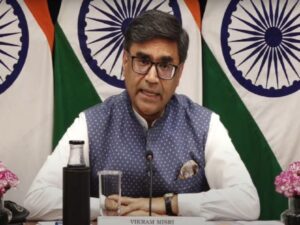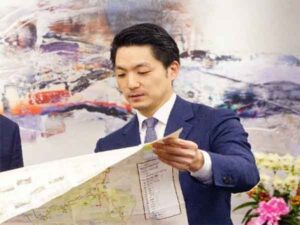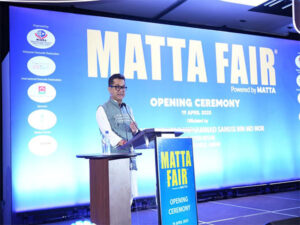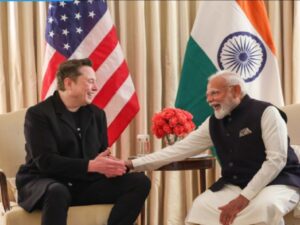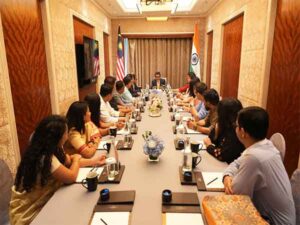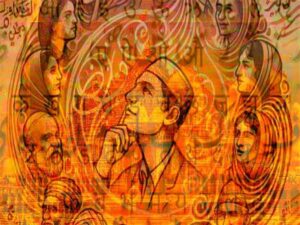UK: Experts discuss rise of extremism, radicalisation in Central Asia at event in London
London [UK], November 3 (ANI): Following the Soviet withdrawal from Afghanistan, many observers highlighted the potentially explosive nature of the region at a recently held event in London.
To consider the extent of this, and to explore the link between religious extremism and radicalisation in Central Asia, The Democracy Forum convened a panel of experts at a recently held virtual seminar titled ‘Extremism and Radicalisation in Central Asia’.
The revival of Islam in Central Asia was one of the many unforeseen consequences of the collapse of the USSR in 1991, said TDF President Lord Bruce, adding that the rebirth of Islam in the region creates new risks as new connections with the Islamic world have brought more extreme interpretations of the faith from abroad.
In this regard, radical Islamist activism is perceived as a serious threat to the internal stability of Central Asia and the survival of its secular regimes.
Lord Bruce cited testimony provided by the Carnegie Endowment for World Peace to the US Congress in 2003, which further exposes the nature of the terrorist threat and the regime response where ‘Central Asian leaders have not taken pains to distinguish between religious activists, religious extremists and Islamic terrorists, [where] anyone who advocates the primacy of religious values over secular norms is understood to be an “enemy of the state”, whether or not this primacy is to be achieved through persuasion or force’.
He reminded the audience of the cautionary view of former White House adviser on Central Asia Fiona Hill, that ‘harsh government repression of dissent is as much, if not more, of a threat to Central Asian stability… as the radical Islamic movements that have developed indigenously or moved into the region’.
The consequences of these anti-terrorist activities have been monitored by Human Rights Watch, which expresses concern for the deliberately unclear definition of extremism used by the authorities to restrict rights to freedom of religion, expression and association.
The conflation of legitimate political dissent, religious adherence and terrorism is a feature of all the Central Asian sovereign states under discussion today, said Lord Bruce, with several already designated as either ‘countries of particular concern’ for being among the world’s worst violators of religious freedom (Afghanistan, Tajikistan, Turkmenistan) or recommended for inclusion in a ‘Special Watch List’ for engaging in or tolerating severe violations of religious freedom (Uzbekistan, Kazakhstan) by the US Commission on International Religious Freedom (USCIRF, 2023).
Has the terrorist threat been manipulated and exaggerated by state actors to pursue strategic domestic policies and increase regime legitimacy? wondered Lord Bruce. If so, he concluded, perhaps we need to reconsider the contested and political nature of terrorism in Central Asia.
A visiting Senior Research Fellow at King’s College, London, Dr Anna Matveeva, highlighted the participation of people of Central Asian origin in international terrorist movements abroad, and whether the threat of domestic radicalisation is dead or dormant, given significant setbacks in foreign countries.
Contrary to common beliefs that it is the poor and uneducated who predominantly become radicalised, Matveeva said most people in Central Asia who get involved in extremism are over 20, well-integrated and educated family people who are not impoverished. Peer pressure, disillusionment and staunch faith are greater factors, she argued.
Why is Central Asia such a factor when it comes to international terrorist movements? asked Matveeva, as foreign fighters for militant groups are disproportionate to the five states of Central Asia.
According to her research, in Syria, for example, Central Asians have a reputation as committed warriors with excellent combat and technical skills – when the Uzbeks came, the war in Syria really started, and Tajiks make up the greatest number of foreign suicide bombers in ISIS. In her view, the motivation of Central Asian fighters is based on a post-Soviet crisis of identity and a spiritual void with no moral agenda, as well as dislocation, loneliness and minorities’ lack of integration, leading to grievances, which in turn lead to violent extremism.
Kyrgyzstan stands out as a country with the highest degree of religious freedom of all five Central Asian nations, said Dr Emil Nasritdinov, Associate Professor of Anthropology at the American University of Central Asia.
For many years, this has had an effect on how the situation with radicalisation has evolved in Kyrgyzstan, which has the lowest number of foreign militants of all Central Asian countries. Religious freedom creates a base for a large number of Islamic groups that are peaceful, non-political and non-radical, and these groups form a strong force against more extreme groups.
In Tajikistan, Uzbekistan etc, most religious groups are banned, except for those sanctioned by the state, so radical groups face little competition on the ground. Kyrgyzstan is different, said Nasritdinov – apolitical groups that are active and popular, groups from various countries, from revived Sufi groups, pull away a large number of Muslims who could become radicalised, and get them into less political forms of Islam. So, Islam has a very strong potential to fight radicalism and extremism, if given freedom. People don’t feel oppressed, have no grievances and are free to practise their religion. From this perspective, Kyrgyzstan is a very good example of how democracy helps to prevent extremism, allowing space for free worship and not creating experiences of injustice. More liberal religious policies, working with rather than against religious groups, concluded Nasritdinov, is the way to avoid extremism.
Examining the evolution of the threat of terrorism on the Tajik-Afghan border was Dr Edward Lemon of the Bush School of Government & Public Service, Texas A&M University in Washington DC.
Tajikistan is often seen as the Central Asian country most vulnerable to terrorism – per capita, it has the third highest number of foreign fighters, with attacks linked to ISIS. Tajikistan is also the country with the longest border with Afghanistan, historically a point where militants could cross over. So it is often labelled as extremist. Yet, argued Lemon, Tajikistan has experienced relatively few incidents, with little mass destabilisation, in our understanding of extremism in the region, we are plagued by a paucity of information, but Lemon urged that we must not take government information at face value, as many so-called ‘foiled plots’ are exaggerated.
While the Tajik-Afghan border is an area of concern, the threat of extremism has been in decline over the last few years, and the Taliban takeover in Afghanistan has not dramatically altered this. Counter-extremism policies of governments are more problematic, said Lemon, and a broader thing to monitor is those who are pushing for Islam to play a greater role in politics, in the wake of the Taliban’s overthrow of the West.
John Heathershaw, Professor of International Relations at the University of Exeter, shone a spotlight on the high levels of repression by Central Asian governments regarding anything political in the form of Islam, even among groups with no record of violence. The assumption that Central Asia has high levels of radicalisation and hence terrorism is erroneous, he argued – less than 0.1 per cent of all terrorist attacks globally take place in Central Asia. There is also a wide misperception that more observant Islam has been leading to greater problems of radicalisation and terrorism, and so Western actors were prepared to work with Central Asian governments to counter this ‘threat’, which only added to the repression.
Regarding the myth about radicalisation in Central Asia, Heathershaw countered various claims, such as the assertion that there was a post-Soviet Islamic revival; the conflation between becoming more Muslim in observant practice and becoming radical; links between authoritarianism and poverty, and radicalisation; and the notion that political Islam necessarily opposes the secular state. So, despite individual ISIS attacks involving Central Asia fighters, radicalisation in the region is very low and we should consider the transnational nature of migration in the region and other factors such as alienation, rather than making generalisations.
For Dr Thomas F. Lynch, Distinguished Research Fellow at the Center for Strategic Research at the National Defense University in Washington DC, the focus was on the dichotomy of ‘Seeing Central Asia, thinking South Asia and China’.
He considered the topic of extremism in Central Asia through the lens of radicalisation and co-mingling of an array of terrorist and extremist outfits across South Asia and explored regional pressures in the way radicalism and terrorism may be heading in Central Asia as we see major changes in the global terrorist milieu, and also in South Asia and China surrounding the region.
Lynch spoke of how structural factors are changing significantly in South Asia and with respect to China’s exposure and role in the global terrorist milieu. This, coupled with changes in Afghanistan, is going to shape, in the next several years, a different framework for Central Asia, as its interactions and patterns are going to be influenced by a new kind of focal point from the terrorist perspective, and also from China’s role.
He underscored the evolving South Asia Muslim radical profile, with more fragmentation, reorganisation and recapture, and pointed to Central Asian groups’ affiliations with organisations in Pakistan and Afghanistan. He also spoke of the orientation against China of the Islamic State of Khorasan Province (ISKP) and other groups, as a result of Chinese persecution of the Uyghurs in Xinjiang province, and how China is becoming ever more of a target in Pakistan, with terror attacks on CPEC and recruitment from Tajikistan to anti-Chinese terror groups.
In his closing comments, TDF Chair Barry Gardiner MP highlighted the low incidences of terrorism in more autocratic Central Asia, as opposed to terror attacks (ie mass shootings’) in democracies such as the US. We need, therefore, to bring the question of terrorism much closer to home, looking not only at religious fundamentalism but also at other forms of terror.

